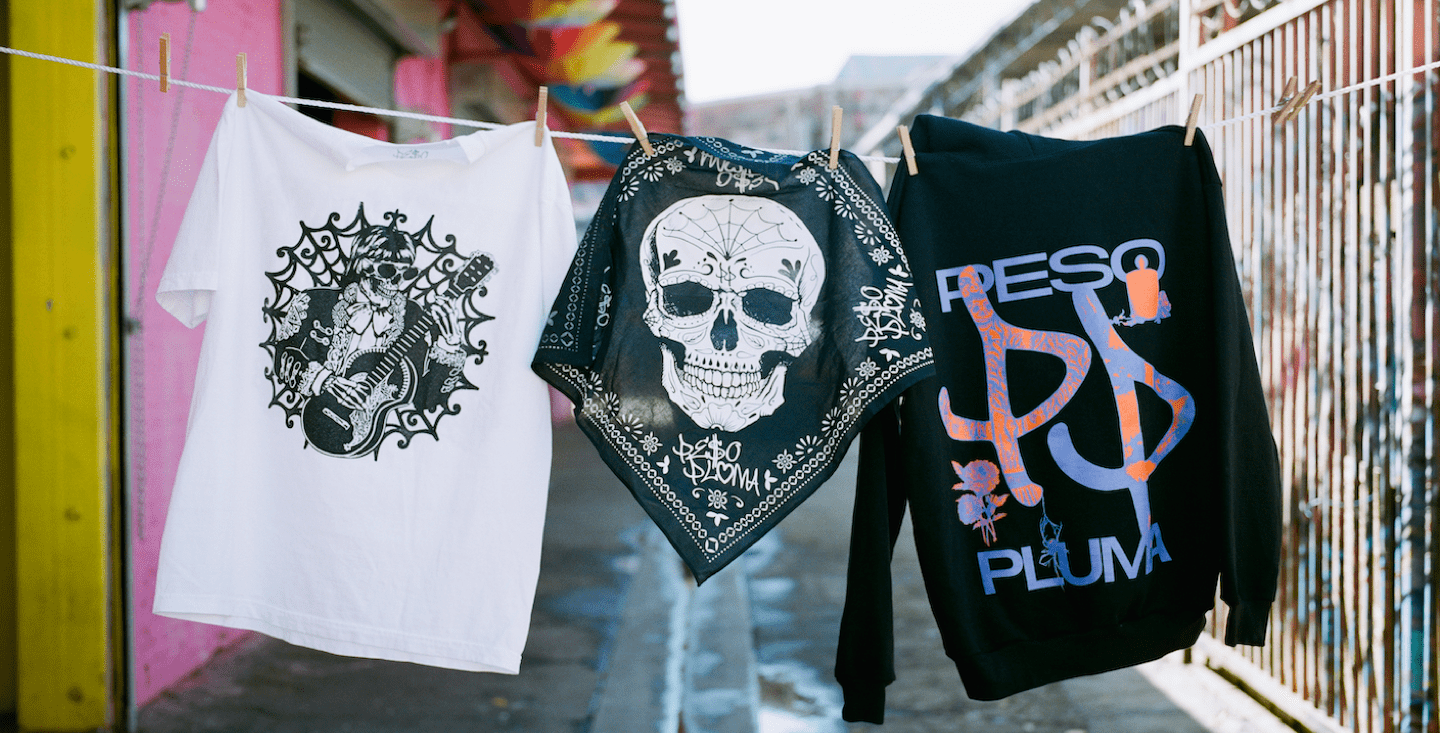Creating artist merchandise, commonly known as artist merch, is an excellent way for musicians to engage with their fans, build their brand, and generate additional income. Whether you’re an independent artist or signed to a label, having your own merchandise can be a powerful tool in your career. In this comprehensive guide, we will explore everything you need to know about making artist merch, from initial planning to launching your own merchandise line.
Why Make Artist Merch?
Engaging with Fans
Artist merch allows fans to show their support and feel connected to you. Wearing your merchandise helps fans express their identity and loyalty. When fans wear your merch, they become walking advertisements, spreading awareness of your brand wherever they go. Additionally, merch can create a sense of community among your fans, making them feel like they are part of something bigger. This sense of belonging can lead to increased fan loyalty and long-term support.
Additional Revenue Stream
Selling artist merchandise is a great way to supplement your income. While music sales and streaming can be inconsistent, merchandise provides a steady revenue stream. Revenue from merchandise can help cover costs such as production, touring, and marketing. Moreover, having diverse revenue streams makes you less vulnerable to market fluctuations and industry changes. Merchandise sales can also provide funds for new projects and investments, allowing you to grow and sustain your career more effectively.
Brand Building
Merchandise helps in establishing and expanding your brand. Each piece of merch acts as a mobile advertisement, spreading awareness about your music and persona. When designed well, merchandise can reflect your artistic vision and values, helping you to build a strong, recognizable brand. Consistent branding across all your merch items reinforces your image and makes it easier for fans to identify with you. Furthermore, branded merchandise can enhance your overall marketing strategy by creating additional touchpoints with your audience.
Planning Your Artist Merch
Understand Your Audience
Before you start designing your artist merch, it’s crucial to understand your audience. Know their demographics, preferences, and what kind of merchandise they are likely to buy.
- Surveys and Polls: Use your social media platforms to run surveys and polls to gather insights directly from your fans. These tools can help you understand what your fans want and what types of products they are most likely to purchase.
- Feedback: Pay attention to fan feedback during concerts and online interactions. Engage with your fans and ask for their opinions on potential merch ideas. This direct interaction can provide valuable insights and make your fans feel involved in the process.
Budget Planning
Setting a budget is essential for the successful launch of your artist merchandise. Consider costs such as design, production, shipping, and marketing.
- Initial Investment: Determine how much you can afford to spend upfront. Consider all the potential expenses, including materials, labor, and any initial marketing efforts. Planning your budget carefully can help prevent overspending and ensure that you have enough funds to cover all aspects of your merch launch.
- Pricing Strategy: Decide on a pricing strategy that covers costs and ensures a profit. Consider your target audience’s purchasing power and the perceived value of your merchandise. Pricing your items too high might deter potential buyers, while pricing too low can undermine the value of your brand. Find a balance that provides value to your fans while ensuring profitability.
Merch Ideas
Come up with various artist merch ideas that align with your brand and resonate with your fans. Some popular items include:
- T-shirts: A classic choice that is always in demand. T-shirts are versatile and can be designed in various styles, colors, and sizes.
- Hoodies: Perfect for colder weather and highly popular among fans. Hoodies offer a larger canvas for designs and can be a higher-priced item due to their perceived value.
- Caps: Great for casual wear and can appeal to a broad audience. Caps are easy to customize and can be a great way to showcase your logo or artwork.
- Posters: Ideal for fans who want to decorate their space with your artwork or image. Posters can be a cost-effective option and are easy to produce in bulk.
- Stickers: Affordable and versatile, stickers can be used on various surfaces, making them a fun and collectible item. They are also great for promotional giveaways.
- Accessories: Items like phone cases, jewelry, and bags can be popular among fans and offer additional ways to showcase your brand. These items can also cater to different segments of your audience, increasing your overall reach.
Designing Your Artist Merch
Creating Designs
The design of your artist merchandise is crucial. It should reflect your brand and be something your fans would be proud to wear or display.
- Logo and Branding: Incorporate your logo and other branding elements. Consistent use of branding elements helps create a cohesive and recognizable image. Ensure your logo is clear and prominent, but not overwhelming.
- Artwork: Use unique artwork that represents your music and style. This could include album covers, lyrics, or custom illustrations. Collaborate with artists who understand your vision and can create designs that resonate with your audience.
- Fonts and Colors: Choose fonts and colors that are consistent with your brand identity. Ensure that the fonts are legible and the colors complement your overall aesthetic. The right combination of fonts and colors can enhance the visual appeal of your merchandise.
Working with Designers
If you’re not confident in your design skills, consider hiring a professional designer. Look for someone with experience in creating merchandise for artists.
- Freelance Platforms: Websites like Fiverr and Upwork are good places to find talented designers. These platforms allow you to review portfolios, read reviews, and select a designer who matches your style and budget.
- Referrals: Ask other artists or your network for designer recommendations. Working with a designer who has experience in the music industry can be beneficial, as they understand the unique needs and preferences of fans.
Getting Feedback
Before finalizing your designs, get feedback from your fans. Share mockups on social media and see what they think. Their input can help you refine your designs and ensure they are well-received.
- Social Media: Platforms like Instagram, Twitter, and Facebook are great for sharing design ideas and gathering feedback. Use features like polls, comments, and direct messages to interact with your fans.
- Focus Groups: Consider organizing small focus groups with a select group of fans to get more detailed feedback. This can provide valuable insights and help you make informed decisions about your designs.
Production and Manufacturing
Finding a Manufacturer
Choosing the right manufacturer is crucial for the quality and success of your artist merch. Look for manufacturers with experience in producing merchandise for musicians.
- Research: Conduct thorough research and read reviews. Look for manufacturers with a proven track record of delivering high-quality products on time.
- Samples: Request samples to check the quality of their products. Inspect the materials, printing quality, and overall craftsmanship to ensure they meet your standards.
Production Methods
Different production methods are available depending on the type of merchandise you are creating.
- Screen Printing: Ideal for bulk orders of items like T-shirts and hoodies. Screen printing is cost-effective for large quantities and produces durable, high-quality prints.
- Direct-to-Garment (DTG) Printing: Suitable for smaller batches and more intricate designs. DTG printing allows for greater detail and color variation, making it ideal for complex designs.
- Embroidery: Great for caps and certain types of apparel for a premium look. Embroidery adds a textured, professional finish to your merchandise and is highly durable.
Quality Control
Ensure that the quality of your artist merchandise is up to standard. Inspect samples and conduct quality checks on bulk orders.
- Consistency: Check for consistency in colors, sizes, and printing quality. Inconsistent products can lead to customer dissatisfaction and damage your brand reputation.
- Durability: Ensure that the materials used are durable and the printing or embroidery withstands regular use. High-quality merchandise enhances customer satisfaction and encourages repeat purchases.
Launching Your Artist Merch
Setting Up an Online Store
An online store is essential for selling your artist merchandise. There are several platforms you can use to set up your store.
- Shopify: A popular platform with many customization options. Shopify offers a range of templates and integrations to help you create a professional online store.
- Bandcamp: Specifically designed for musicians, allowing you to sell both music and merch. Bandcamp is user-friendly and has a built-in community of music fans.
- Etsy: Good for unique, handmade items and has a built-in customer base. Etsy is ideal for artists looking to create custom or limited-edition merchandise.
Marketing Your Merchandise
Marketing is key to successfully launching your artist merch. Use various channels to promote your merchandise.
- Social Media: Leverage platforms like Instagram, Facebook, and Twitter to showcase your merch. Share high-quality photos, videos, and behind-the-scenes content to generate interest.
- Email Newsletters: Send out newsletters to your fan base with exclusive offers and updates. Use email marketing to keep your fans informed about new releases and promotions.
- Concerts and Events: Sell your merch at concerts and events to maximize reach and engagement. Set up a merch booth at your shows and offer exclusive items or discounts to attendees.
Link your merch on your Spotify profile:
Collaborations
Collaborate with other artists, influencers, or brands to expand your reach. Joint merchandise can attract fans from both parties, increasing your customer base.
- Artist Collaborations: Partner with other musicians to create limited-edition merch. This can help you reach new audiences and create unique, collectible items.
- Influencer Collaborations: Work with influencers to promote your merch. Influencers can help you reach a larger audience and generate buzz around your products.
- Brand Collaborations: Collaborate with brands that align with your image and values. This can provide additional marketing support and resources, enhancing the visibility and appeal of your merchandise.
Launch Event
Consider hosting a launch event, either in person or online, to create buzz around your artist merch. This could include live performances, giveaways, and exclusive offers.
- In-Person Events: Host a launch party or a special concert where fans can purchase your merch. Create a memorable experience that ties into the release of your merchandise.
- Online Events: Use platforms like YouTube, Instagram Live, or Twitch to host virtual launch events. Engage with your fans in real-time, showcase your merch, and offer exclusive deals for attendees.
- Exclusive Offers: Provide limited-time discounts or bundles available only during the launch event to incentivize purchases and create a sense of urgency.
Managing Orders and Inventory
Order Fulfillment
Efficient order fulfillment is crucial for customer satisfaction. You can handle fulfillment yourself or outsource it to a third-party logistics provider.
- Self-Fulfillment: Manage inventory and ship orders yourself. This approach gives you more control over the process but can be time-consuming as your business grows.
- Third-Party Fulfillment: Use services like Printful or ShipBob to handle fulfillment on your behalf. These services can streamline the process and allow you to focus on other aspects of your career.
Inventory Management
Keep track of your inventory to ensure you don’t run out of stock or overproduce. Use inventory management software to streamline this process.
- Inventory Management Software: Tools like Shopify’s inventory management system, TradeGecko, or QuickBooks can help you keep track of stock levels, manage orders, and forecast demand.
- Regular Audits: Conduct regular inventory audits to ensure accuracy and address any discrepancies. This practice helps prevent stockouts and overproduction.
Customer Service
Provide excellent customer service to build trust and encourage repeat purchases. Respond to inquiries promptly and handle any issues professionally.
- Customer Support Channels: Set up multiple channels for customer support, including email, social media, and phone. Ensure your contact information is easily accessible on your website and merchandise packaging.
- Return and Exchange Policies: Clearly outline your return and exchange policies to manage customer expectations. Providing hassle-free returns can improve customer satisfaction and loyalty.
Post-Launch Strategies
Collecting Feedback
After launching your artist merch, gather feedback from your customers to understand what worked and what didn’t. Use this information to improve future merchandise.
- Surveys: Send out surveys to customers who purchased your merch to gather detailed feedback. Ask about their satisfaction with the product quality, design, and overall buying experience.
- Social Media: Monitor comments and messages on your social media platforms. Engage with your fans to show that you value their opinions and are committed to improving your merchandise.
Analyzing Sales Data
Analyze sales data to identify trends and preferences. This can help you make informed decisions about future merch designs and production quantities.
- Sales Reports: Use analytics tools provided by your online store platform to track sales performance. Look for patterns in purchasing behavior, such as popular items and peak sales periods.
- Customer Demographics: Analyze demographic data to understand who is buying your merch. This information can guide your marketing efforts and help you target the right audience.
Expanding Your Line
Once your initial merch is successful, consider expanding your line with new items and designs. Keep your offerings fresh and exciting to maintain customer interest.
- Seasonal Collections: Introduce new merchandise for different seasons or holidays. Limited-edition collections can create excitement and drive sales.
- Fan-Requested Items: Use feedback from your fans to create new merchandise items they want. Involving your fans in the creative process can increase engagement and loyalty.
- Collaborations and Partnerships: Continue to explore collaboration opportunities with other artists, influencers, and brands to expand your reach and offer unique products.
FAQs
What is the best platform to sell artist merch?
Platforms like Shopify, Bandcamp, and Etsy are popular choices for selling artist merchandise. Each has its own benefits, so choose the one that best fits your needs.
- Shopify: Offers extensive customization options and integrations, making it suitable for larger merch lines.
- Bandcamp: Ideal for musicians, as it allows you to sell both music and merchandise in one place.
- Etsy: Great for unique, handmade items and has a built-in customer base looking for creative products.
How much should I charge for my artist merch?
Pricing depends on various factors, including production costs, market demand, and your target audience. Ensure your prices cover costs and provide a reasonable profit margin.
- Cost-Based Pricing: Calculate all your costs, including production, shipping, and marketing, and add a markup to ensure profitability.
- Market-Based Pricing: Research similar products in the market to see what other artists are charging. Adjust your prices to stay competitive while reflecting the value of your merchandise.
How can I promote my artist merch effectively?
Use social media, email newsletters, and live events to promote your artist merchandise. Collaborations and launch events can also help create buzz.
- Content Marketing: Create engaging content such as videos, blog posts, and behind-the-scenes footage to showcase your merch.
- Influencer Marketing: Partner with influencers to reach a broader audience and generate interest in your merchandise.
- Exclusive Offers: Provide special discounts, bundles, or limited-edition items to incentivize purchases and create urgency.
Should I handle order fulfillment myself or use a third-party service?
This depends on your capacity and resources. Self-fulfillment gives you more control, but third-party services can handle logistics more efficiently, allowing you to focus on creating music.
- Self-Fulfillment: Ideal for smaller operations or those who want complete control over the process.
- Third-Party Fulfillment: Best for larger operations or those looking to scale without the logistical burden. Services like Printful and ShipBob offer comprehensive fulfillment solutions.
What types of artist merch are most popular?
T-shirts, hoodies, caps, and posters are among the most popular types of artist merchandise. Choose items that align with your brand and appeal to your audience.
- T-Shirts: Versatile and always in demand. Consider offering different styles, such as long-sleeve, tank tops, and v-necks.
- Hoodies: Popular for their comfort and style. Offer a range of colors and designs to appeal to different tastes.
- Caps: A great way to showcase your logo and appeal to fans who prefer casual wear.
- Posters and Prints: Perfect for fans who want to decorate their space with your artwork or image. Consider offering limited-edition signed prints for added value.
Glossary
Artist Merch
Merchandise created by artists, including apparel, accessories, and other branded items.
Direct-to-Garment (DTG) Printing
A printing method that applies ink directly onto the fabric, suitable for detailed and colorful designs.
Embroidery
A method of decorating fabric with needle and thread, often used for caps and premium apparel.
Inventory Management
The process of tracking and managing stock levels to ensure products are available for sale.
Order Fulfillment
The process of receiving, processing, and delivering orders to customers.
Screen Printing
A printing technique where ink is pushed through a screen onto fabric, ideal for large batches of merchandise.
Third-Party Logistics Provider
A service that manages the storage, fulfillment, and shipping of products on behalf of a seller.
Conclusion
Creating and launching your own artist merch is an exciting venture that can greatly benefit your career. From engaging with fans to generating additional income, the advantages are numerous. By carefully planning, designing, and marketing your artist merchandise, you can create products that resonate with your audience and reflect your brand. Remember to collect feedback, analyze sales data, and keep innovating to keep your merchandise line fresh and appealing. With dedication and creativity, your artist merch can become a powerful tool in building your music career.
For further reading, explore these related articles:
- What is YouTube Content ID?
- Deliver My Tune’s Exciting New Services!
- Know the Ways to Get the Music Sync Licensing
- What is Performance Royalty?
For additional resources on music marketing and distribution, visit Deliver My Tune.






